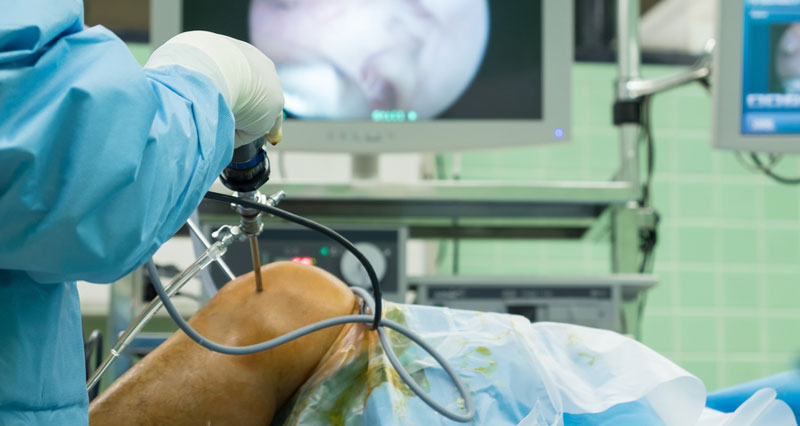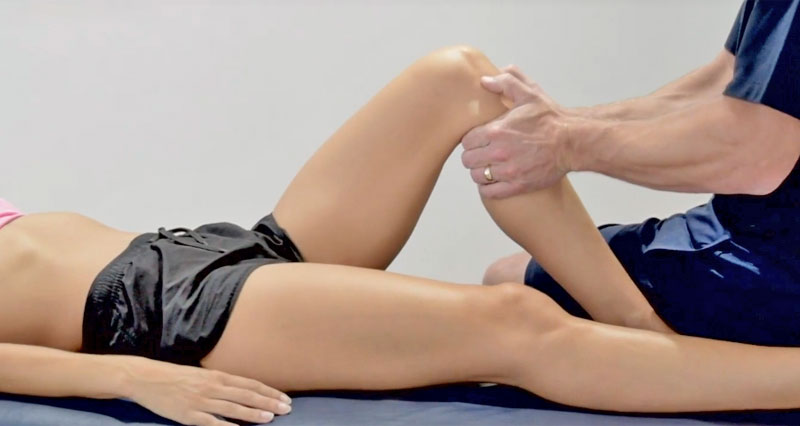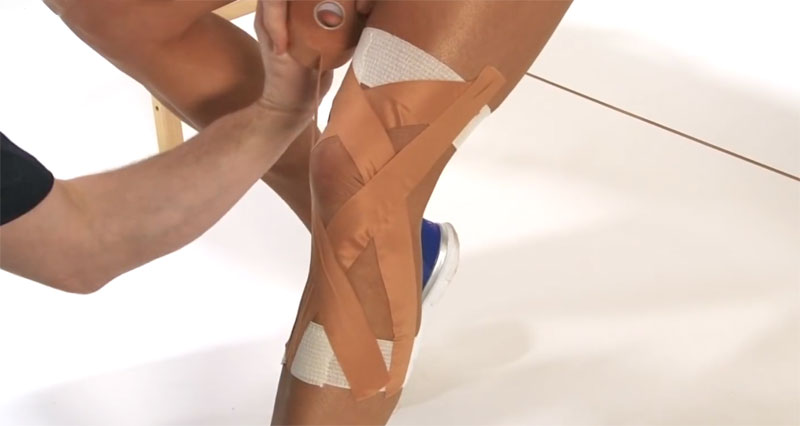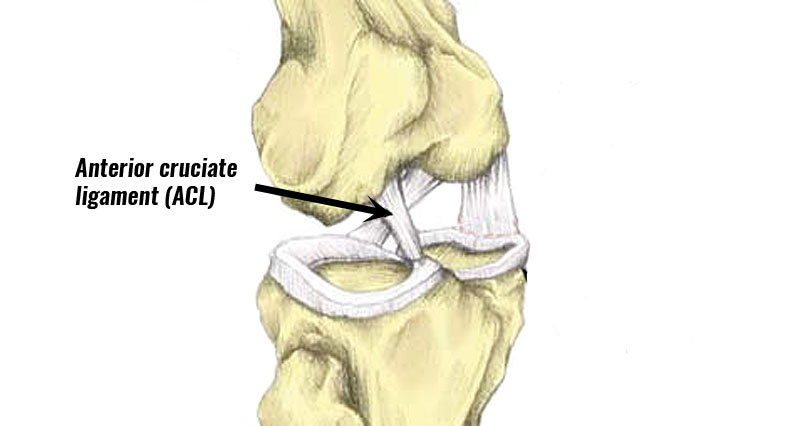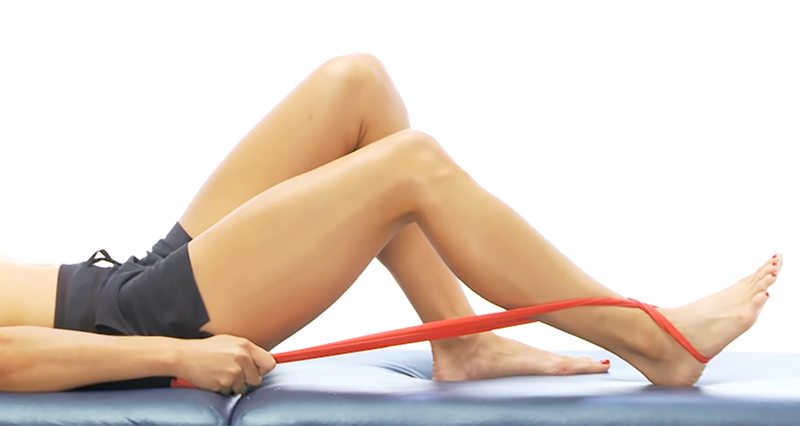ACL Sprain treatment methods form part of our full ACL sprain rehabilitation program and includes cold therapy, rest, taping, and bracing. Created by International Sports Physiotherapist Phil Pask it takes you step-by-step from initial injury to full fitness.
We recommend seeking professional advice if you are unsure before attempting any rehabilitation exercises.
Who is this ACL Sprain treatment program suitable for?
This program is suitable for anyone who has a mild to moderate ACL sprain where surgery is NOT indicated. If you have had surgery for a torn ACL then take advice from your surgeon as ACL rehab programs differ depending on how your operation was performed.
If you are unable to perform more than a single hop, or you have significant pain and swelling it is probably best you seek professional advice before beginning the program.
Program structure
Our ACL Sprain treatment consists of four phases. In order to progress to the next phase, you must reach specific ‘exit criteria’. So whatever type of injury you have, you begin at phase 1 and work through each phase.
ACL Sprain treatment phase 1
Phase 1 begins as soon as possible after injury and can last up to 2 or 3 weeks depending on your grade of injury. The aim is to stop bleeding within the joint and control swelling.
By the end of phase 1, you should be able to walk normally without a knee brace and without your knee feeling unstable. You should also be able to fully extend (straighten) your knee and there should be minimal swelling.
Cold therapy
For the first 24 hours:
Apply the PRICE principles of protection, rest, ice, compression, and elevation for 20 minutes (Or 20 minutes on, 20 minutes off, 20 minutes on) every 2 – 4 hours.
- Avoid any loading of the knee.
- Use crutches if necessary.
- From 24 – 48 hours:
- Continue to apply cold therapy and compression for 20 minutes (Or 20 minutes on, 20 minutes off, 20 minutes on) every 2 – 4 hours.
After 48 hours
- Continue to apply cold therapy and compression for 20 minutes 4 times a day
- If you haven’t already done so then consider seeking professional medical advice unless:
- You are able to fully weight bear.
- Your knee feels stable.
- Bruising, persistent swelling and localized pain will be minimal.
Knee brace
Wear a hinged knee brace to protect and support the joint.
How long you should wear a knee brace will depend on how bad your injury is:
- Grade 1 sprains approximately 1 week
- For grade 2 between 2 and 3 weeks
- Grade 3 – seek advice from your medical professional
Note: only discard your knee brace when the knee feels pretty stable on standing and weight baring/swing phases of walking.
Stretching exercise – patellofemoral mobes
Gently push from side to side, and glide from top to bottom. 2 sets for 30 seconds.
Exit Criteria
To progress to phase 2 you need to:
- Have minimal or no residual swelling.
- Do a double leg/single leg stance pain-free.
- Walk normally, without a knee brace with less than 2/10 pain.
- Walk normally without your knee feeling unstable.
- Less than 3 minutes of knee stiffness first thing in the morning.
ACL Sprain treatment phase 2
Phase 2 comprises:
- Cold therapy
- 4 mobility exercises
- 3 activation exercises
- 9 strengthening exercises
- 6 movement control exercises
- 4 functional exercises
The aim of phase 2 is to eliminate any swelling, regain full range of motion in both knees, and have the confidence to step up and down without pain.
Check the Exit Criteria to see when you can progress to phase 3.
Exit criteria
- To move onto phase 3 you should have no swelling.
- Have a normal range of movement in both knees.
- Step up and down confidently without pain.
- Do a ‘Leap to stick’ exercise with <3/10 pain.
Phase 3 comprises 37 exercises:
- 5 mobility exercises
- 6 activation exercises
- 8 strengthening exercises
- 9 movement control exercises
- 8 functional exercises
- Stationary cycle protocol
The aim of phase 3 is to progress to a point where you can run at 75% of maximum speed and begin to perform simple agility drills.
Check the Exit Criteria to see when you can move to phase 3
ACL Sprain treatment phase 3
Phase 3 comprises 37 exercises:
- 5 mobility exercises
- 6 activation exercises
- 8 strengthening exercises
- 9 movement control exercises
- 8 functional exercises
- Stationary cycle protocol
The aim of phase 3 is to progress to a point where you can run at 75% of maximum speed and begin to perform simple agility drills.
Check the Exit Criteria to see when you can move to phase 4.
Exit criteria
To move on to phase 4 you should:
- Have a full range of movement in both knees
- Do a Single Hop Test (within 10% Right = Left])
- A 3-hop test (within 10% Right = Left)
- Have 75%+ linear speed and acceleration.
- A simple Agility drill: (Figure 8/10m Agility square/T Test).
- Be able to do a squat to 75% of normal strength.
ACL Sprain treatment phase 4
Phase 4 comprises 43 exercises:
- 4 mobility exercises
- 6 activation exercises
- 12 strengthening exercises
- 5 movement control exercises
- 3 functional exercises
- 2 stationary cycle protocols
- Running progressions
The emphasis in phase 4 is on bridging the gap between rehabilitation exercises and full fitness.
Don’t skip this phase because you are almost there. it is important, especially if you want to avoid setbacks later.
This is where your knee is able to withstand and cope with unpredictable, high load, and high-speed movements and activities.
Exit criteria
To complete phase 4 you must:
- Be capable of doing the Grapevine and Carioca exercises with full power
- Be capable of 100% Speed + acceleration
- Perform complex Agility Drills
- Back to a full-weight training program (if applicable)
- Have at least 2 full training sessions (2 weeks for more serious injuries)
